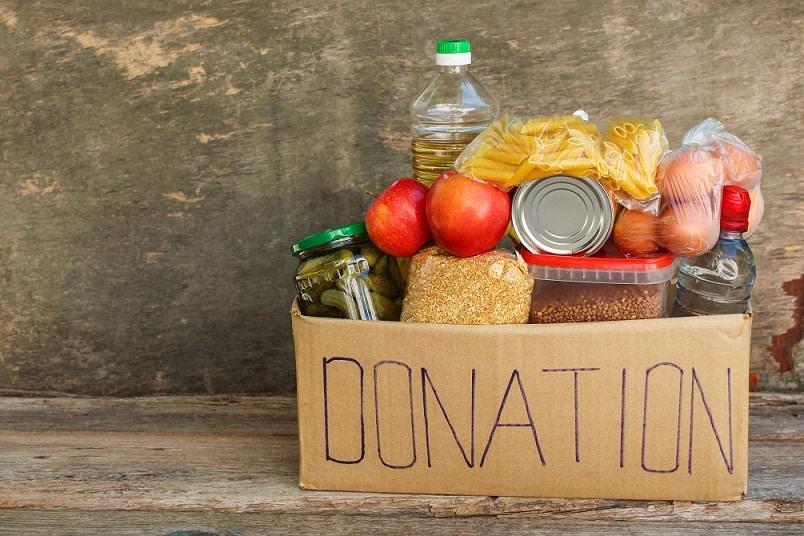
Why is Kitchen Waste Management in Restaurants Important?
Restaurants are responsible for 40% of the food waste produced annually — approximately 16 million tons of food lost. This practice has a significant environmental and economic impact:
- The loss generated by food waste amounts to almost $2 billion in lost profits.
- Food waste accounts for at least 6% of global greenhouse gas emissions.
Whenever a restaurant discards food, all the inputs used in its production, processing, transportation, preparation, and storage will also go to waste. Furthermore, if all this food ends up in landfills, it emits methane, which has more than 80 times the warming power of carbon dioxide over the first 20 years.
On the other hand, a restaurant that appropriately manages its food waste can see a series of long- and short-term benefits:
- Customer’s well-being. The restaurant provides customers with high-quality food and services thanks to proper sanitation standards in areas where food is prepared.
- High return on investment. Addressing the food waste issue in restaurants benefits both businesses and the environment. Studies have shown that restaurants can save an average of $7 for every dollar invested in proper waste management systems.
- Employee safety. Proper waste disposal management in restaurants results in a secure workplace where staff can conduct their activities. Plus, a clean workplace equates to healthier employees who are less prone to accidents, increasing productivity over time.
- Environmental impact. Food waste costs significant amounts of water and energy. All the greenhouse gases generated when producing and processing food become even more ineffective when products go to waste. By reducing or eliminating food waste, restaurants also reduce their carbon footprint, with a long-term impact on the environment.
Ways to prevent food waste in restaurants
- Educate your staff. All employees must be on board to successfully implement any changes meant to reduce food waste. To make this happen, train everyone for new procedures so that all staff knows how to carry out waste reduction plans.
- Donate food to charity. Managers can educate themselves on assisting charities with not used restaurant food. Tech solutions, too, can help organizations match supply and demand, allowing well-meaning suppliers to find a home for all the food at risk.
- Rethink your restaurant’s menu. Food waste is easier to control when you prep a variety of dishes that use the same ingredients. Furthermore, removing items that don’t sell well from the menu can also reduce the number of ingredients at risk of going bad without being used.
- Be clear about what’s in each dish. The descriptions in the restaurant’s menu are vital, as they help guests understand what they’re ordering. Dishes are less likely to be returned to the kitchen and thrown away when descriptions are clear about the ingredients and how food is prepared.
- Resize portions to prevent waste. When there’s less food on the plate, the guest is likelier to finish it all. And, when they don’t finish, there’s less food for you to throw away.

7 Steps to Reduce Food Waste in Restaurant Industry
1. Understand where waste comes from
The first step toward proper waste disposal in restaurants is understanding how much food you waste regularly. This way, you can determine how much of it is unavoidable (customer rejections) and what can be prevented (cooking errors, spills, overproduction). Conduct an audit to get clear data on how much food you can save without impacting the quality of your service or causing unnecessary delays.
2. Plan food shopping
Ensure you only buy the ingredients your staff needs in a given time frame. “Stocking up” can be tempting, especially when you get a reasonable product price, but much of the extra food will spoil in storage — especially the less-in-demand food items.
Buying in bulk is profitable only when you can store food properly, meaning that you have the capacity and the right conditions for each item. Otherwise, what you might be saving will eventually go to waste, impacting overall costs, the restaurant’s profitability, and the environment.
3. Organize storage spaces
Tidy product storage areas make it easy to monitor ingredients and keep an eye on expiration dates. The more diverse your food and beverage offer is, the higher the necessity to keep everything organized. It’s easier said than done, but tidiness is vital to effective inventory management, food waste control, and overall cleanliness.
4. Ensure your restaurant inventory includes a food waste list
Effective inventory helps you keep track of the foods you have on hand and what went to waste. On the one hand, you get a detailed list of the foods in each storage area with expiration dates so your staff can prevent foods from going to waste.
On the other hand, knowing what was thrown out can help you evaluate your restaurant’s needs and improve your shopping strategy. Effective inventory control makes ordering ingredients on par levels easy. This way, you can only order the minimum of inventory required to keep demand stable while allowing for a small margin of error to account.
5. Practice flexible inventory management
Order more of an ingredient when needed instead of placing standard orders at regular intervals. The practice takes more effort and requires dedicated software to track inventory and orders, but it’s well worth it in terms of reducing food waste.
Flexible inventory management positively impacts your carbon footprint and profitability. You get to keep an eye on your restaurant’s inventory, so you can better understand demand and identify new ways to increase profit margins in the long run.
6. Implement the “First In, First Out” Rule
The “First In, First Out” (FIFO) rule is an effective method to keep your food from spoiling before you can use it. When new supplies arrive, you place them behind your existing stock to ensure older items are used first.
This inventory management system makes older stock easily accessible, so your employees retrieve the right ingredients fast when they go to the storeroom to pick up food items. The method can be time-consuming when stocking a new delivery, but it’s likely to save you money in the long run and support an effective food waste management method.
7. Create special offers to manage surplus
Whenever you have ingredients that must be used up quickly, create special menu items that incorporate those ingredients. Alternatively, you can be creative with regular dishes that allow you to use up fresh and perishable ingredients, such as vegetables or fruits.

Challenges with Restaurant Waste Management
- Restaurant managers can’t control the supply chain. To develop a comprehensive waste management solution, they must collaborate closely with their suppliers to ensure that every aspect of the supply chain is committed to reducing and monitoring waste. Digital solutions can help, but there’s still plenty of work to be done to bring everyone on the same page.
- Data on waste amounts and industry benchmarks are rarely accurate. The lack of data keeps restaurants from having realistic goals, tracking their progress, or even understanding where they’re at compared to other facilities. Without a joint effort among more organizations operating in the hospitality industry, it becomes challenging to make informed decisions and streamline the waste management process.
- Customers don’t always respond well to smaller potions. Restaurant managers must observe customer behavior to understand what portions can be resized based on the amount of plate waste. Moreover, they need to be focused on providing quality food, so people continue to receive value for money even when portions get smaller.

How Restaurant Owners Can Support the Waste Management Process
- Endorse waste management initiatives. Employees are more likely to embrace change and be proactive about preventing waste if everyone’s on board and supports a waste management system.
- Set clear goals for reducing waste production, reusing, and recycling. Help managers determine what needs to be done for each goal to achieve the desired results.
- Build a zero-waste culture. While eliminating food waste in restaurants is not yet achievable, trying to do more with less and prevent avoidable waste is possible. As a restaurant owner, you can invest in staff education, better equipment, and innovative tools to control food waste and build a sustainable business.
How to Handle the Restaurant Waste Management Process
Prevention only fixes part of the problem. What can you do about unavoidable waste when running a restaurant?
Start by building a waste management plan for restaurants to recycle food waste and convert it into soil, fuel, or energy. For instance, oils and fats, such as fryer oil, can be used to produce biodiesel and other goods. Restaurant managers can contact a local manufacturer or biodiesel clubs and provide them with fryer oil as feedstock. On the other hand, food scraps and compostable packaging can be turned into compost to support agriculture or landscaping. Collaborating with a local facility that needs organic waste to produce compost or biogas can be a cost-effective way to deal with food scraps.
Effective food waste management includes five simple steps:
- Name a responsible for managing food waste. Depending on the size of the restaurant and the scope of the operations performed, the restaurant team may consist of one or more people. Ideally, these individuals are involved in the meal preparation and know what ingredients are necessary to prepare menu dishes.
- Examine the current waste to understand what operations and recycling initiatives need to streamline the process. Regular waste audits will help you make better management decisions and increase profitability.
- Build a sorting system to separate different types of food waste and streamline recycling.
- Analyze recycling costs and find ways to optimize operations and keep expenses low.
- Build a network of organizations to help you manage waste so that nothing ends in landfills.
Recycling and Composting as Main Waste Management Solutions
Restaurant managers can streamline waste management if they know where to look for solutions. As the world embraces cleaner, greener waste management practices, various waste recycling programs can support sustainable restaurant operations.
Food scraps make excellent organic matter for compost, a substance rich in essential ingredients like nitrogen, carbon, and water. Instead of treating organic waste as trash and disposing of it in nature, restaurants can turn food waste into a valuable resource.
Composting uses leftovers in an environmentally responsible manner, being a cost-effective method for reducing the amount of garbage sent to landfills and recycling it into a valuable soil amendment.
Whether restaurants build small-scale composting systems or partner with large-scale entities, the results can significantly impact the business. As many as 83% of consumers wish restaurants to implement environment-friendly practices, and many are willing to pay more to support sustainable businesses.
Moreover, recycling and composting food waste is a way to reduce your restaurant’s carbon footprint, affecting the health and safety of the entire community.
HomeBiogas Solutions for Eco-friendly Restaurant Waste Management
The HomeBiogas Pro System offers a comprehensive and user-friendly solution for managing organic restaurant waste seamlessly integrated into existing kitchen infrastructures. It streamlines kitchen waste management and enables restaurant owners interested in circular economy benefits. This commercial system uses anaerobic digestion to transform waste into energy — the more food waste the system digests, the more energy it will produce.
HomeBiogas solutions aim to reduce energy costs, waste management challenges, and water heating expenses while producing 100% organic fertilizer to boost food production in agriculture. The system is completely sealed, ensuring no unpleasant odors are produced. Additionally, it’s certified to meet both ISO (International Organization for Standardization) 23590 and CE mark standards for biogas systems, making it a safe and viable option for restaurants of all sizes in various locations.
Final Thoughts
Food waste management is complicated, involving multiple factors, from supply chains to proper waste disposal solutions. However, a lack of action in this area significantly impacts the environment, revenue, and overall quality of life.
Restaurant owners and managers undertake significant efforts to effectively address food waste issues in restaurants. The motivation to take action is stronger than ever — when reducing food waste, restaurants save money, reduce their carbon footprint, and increase customer loyalty.






